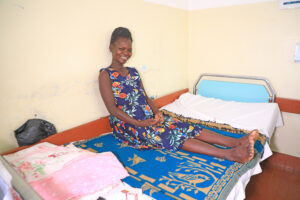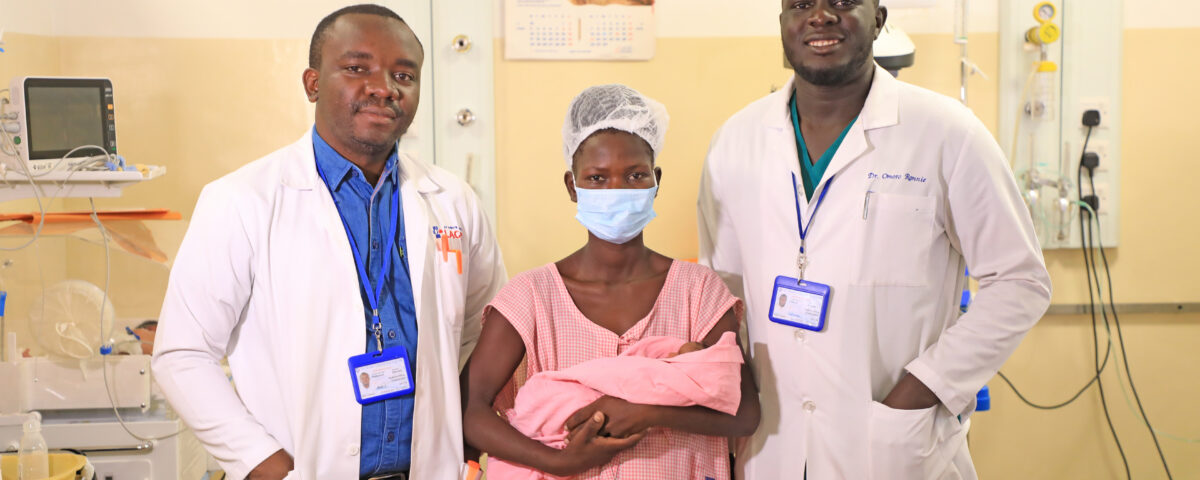Have you ever imagined a tiny life beginning not in the safety of the womb, but in the vast, unforgiving space of the abdominal cavity? This is abdominal pregnancy—a terrifying and heartbreaking form of ectopic pregnancy where the fertilized egg implants outside the uterus, in a place never meant to nurture life.
Most mothers have never even heard of it—until it happens to them. When it does, the stakes couldn’t be higher. The risks are severe: catastrophic bleeding, organ damage, and the unthinkable loss of a much-wanted baby. Yet, against all odds, some women and their little fighters survive, defying medical expectations in stories that are nothing short of miraculous.
This is one of those stories—a journey of fear, hope, and the fierce will to survive, where every heartbeat is a battle and every day is a gift.
At just twenty-eight years old, Adong Winnie was no stranger to motherhood. A proud mother of three from Koro Abili, she had walked the path of pregnancy before, each time filled with hope, expectation, and the quiet joy of bringing new life into the world. But this time, something was different.
As she entered her 38th week, what should have been the final stretch of waiting—counting down the days until she held her baby—turned into weeks of unrelenting pain. “I remember being pregnant with my second child; it was a difficult time. The doctors told me that my child was inside the fallopian tube, and I had to undergo surgery to remove it. I thought I was going to die,” she recalled. “After that, I was blessed with my current child, who is now two years old. Then, I conceived again, and here I am, two days into my eighth month of pregnancy. The pain I’ve been experiencing is unbearable. It started in the fourth month and only worsened, especially during the seventh and eighth months. This pain has led me to this operation today.”
The persistent pain in her abdomen would not let her be. She sought help, moving from one health facility to another, but no one could provide answers or relieve her suffering.
Then, she arrived at Lacor Hospital.
 Here, she was admitted, put on antibiotics, and monitored for a week as the doctors initially suspected peritonitis—a severe abdominal infection. However, that wasn’t the case with Adong’s condition. The pain wasn’t just worsening; it was threatening her life. The Obstetrics team could not stand by idly, so they involved the Surgical team to investigate what was happening to Adong.
Here, she was admitted, put on antibiotics, and monitored for a week as the doctors initially suspected peritonitis—a severe abdominal infection. However, that wasn’t the case with Adong’s condition. The pain wasn’t just worsening; it was threatening her life. The Obstetrics team could not stand by idly, so they involved the Surgical team to investigate what was happening to Adong.
They decided to operate, bracing for the unknown.
What they found was astonishing—a fully formed baby, fighting to survive in the wrong place, nestled in the abdominal cavity, with the placenta clinging to the upper part of the uterus.
After the complex surgery, Dr. Derick expressed his gratitude, saying, “We are thankful that both the mother and baby are safe. This was a rare and challenging case with significant blood loss, but we successfully achieved hemostasis and carefully separated the placenta from the intestine and the fundus of the uterus.”
In a conversation with Dr. Omoro Ronnie, a Medical Officer cherished by many mothers for his compassionate care in the maternity ward, he shared his thoughts on abdominal pregnancies. “These pregnancies are quite rare, with global rates ranging from 1 in 10,000 to 1 in 30,000. They come with serious risks for both mothers and their babies. The chances of losing a baby can be as high as 90%, and mothers face significant risks too, with mortality rates ranging from 1% to 18%. We have encountered two such cases from the start of the year to date. So, when we successfully support both mother and child, it’s not just a medical achievement; it feels like a monumental victory for all of us at Lacor Hospital.”
As we wrote this, Adong was safe and out of the High Dependence Unit, and her baby too healthy and in good shape in the neonatal unit. Adong and the baby were wards apart but today, she held her child for the first time. Discharged and happy, what awaits them is nurturing the mother-child bond.
Today, we celebrate not just a medical triumph, but Adong’s strength, her baby’s will to live, and the dedication of our team who refused to give up.


